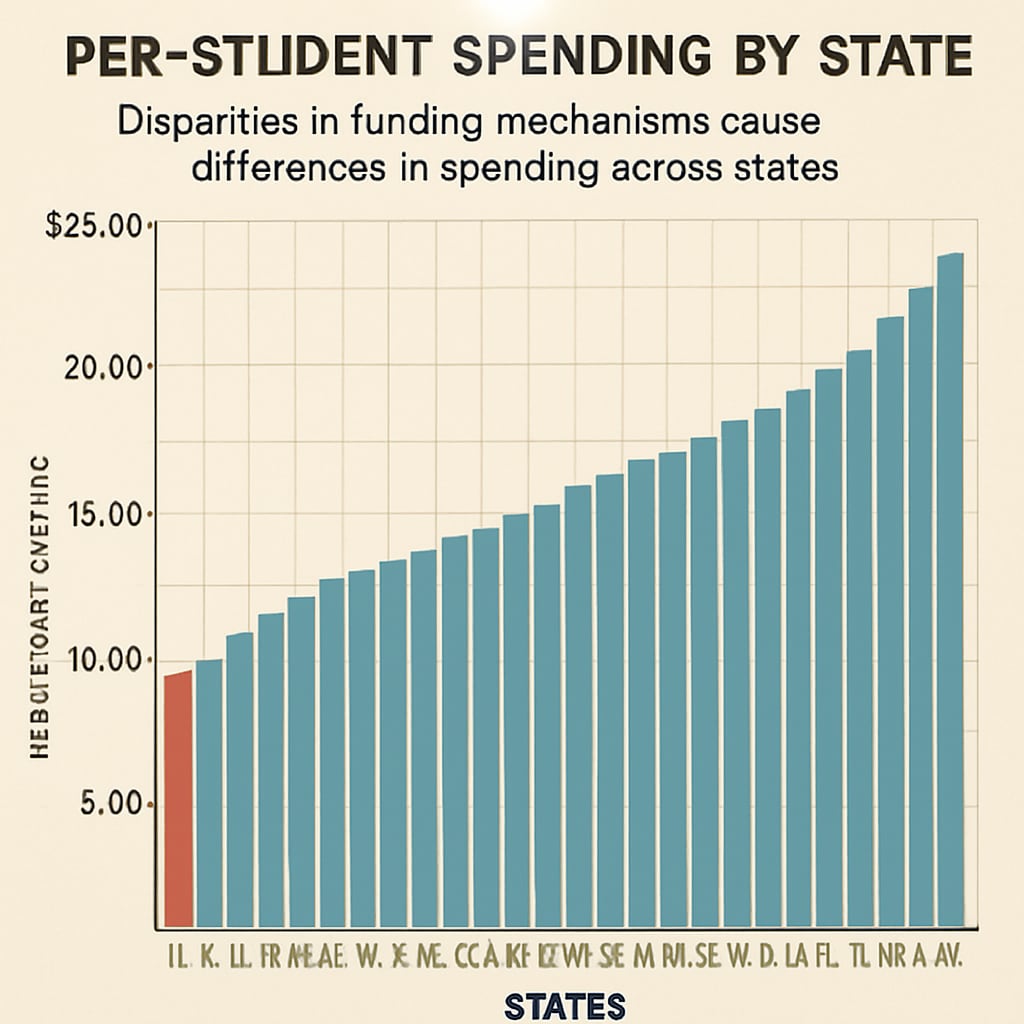When analyzing school budgets, the term “per-student spending” often takes center stage. Policymakers, educators, and parents rely on this metric to assess the quality of education funding. However, the way funds are allocated can obscure the real picture. Through funding flows and budgeting tactics, school districts might inflate per-student spending statistics. This article examines the issue, with a focus on school transportation systems, and highlights the need for transparent oversight in education funding.
How School Districts Can Inflate Per-Student Spending
Per-student spending is calculated by dividing the total expenditures of a school district by the number of enrolled students. While this formula appears straightforward, the reality is far more complex. School districts can use specific accounting practices to artificially inflate this figure.
For instance, some districts strategically allocate costs to areas that directly affect per-student calculations. A notable example is the school transportation system. Instead of treating transportation expenses as a separate operational cost, these expenditures are sometimes lumped into the broader educational budget. As a result, the average spending per student appears higher, even though the funds may not directly contribute to classroom learning.

In addition, some states have funding formulas that reward higher per-student spending with increased state aid. This creates an incentive for districts to reclassify costs or seek external funding sources, further distorting the data. For example, a district might allocate significant resources to administrative overhead while keeping classroom investments stagnant.
The Role of State Funding Mechanisms
State funding mechanisms often exacerbate these distortions. Most states use formulas that consider factors such as student demographics, district size, and overall spending. While these formulas aim to ensure equity, they can be manipulated.
Take transportation as an example again. In some states, districts receive additional funding based on the number of miles buses travel or the number of students transported. This creates a system where districts might exaggerate transportation needs to secure more funding. The additional funds may then be reallocated to other areas, inflating per-student spending figures without genuinely improving educational outcomes.
Moreover, differences in cost-of-living across regions can make the data misleading. A district in a high-cost area will naturally report higher per-student spending than one in a rural region, even if the quality of education delivered is comparable.

Why Transparent Oversight is Essential
The consequences of distorted per-student spending data are significant. Policymakers may allocate resources based on flawed statistics, leading to inequities in education funding. For example, a district that appears to spend more per student might receive less state aid, even if its higher spending is due to inflated transportation costs or administrative overhead.
To address this issue, greater transparency in financial reporting is essential. School districts should be required to provide detailed breakdowns of their expenditures, clearly separating instructional costs from operational expenses. Additionally, independent audits can help ensure that funding is allocated efficiently and equitably.
Furthermore, states should revisit their funding formulas to minimize opportunities for manipulation. Simplifying these formulas and tying them more directly to classroom outcomes could reduce distortions and make the system fairer.
Key Takeaways for Stakeholders
For parents, educators, and policymakers, it is crucial to look beyond headline figures when evaluating school budgets. Here are some actionable steps:
- Advocate for detailed financial reporting from school districts.
- Support independent audits to verify the accuracy of spending data.
- Push for reforms in state funding formulas to prioritize classroom investments.
- Engage with local school boards to ensure funding decisions align with student needs.
By taking these steps, stakeholders can help ensure that education funding serves its intended purpose: delivering high-quality learning experiences for all students.
In conclusion, the issue of distorted per-student spending statistics is more than a technical problem—it has real implications for educational equity and quality. Transparent oversight and equitable funding mechanisms are not just necessary; they are vital for building a fair and effective education system.


